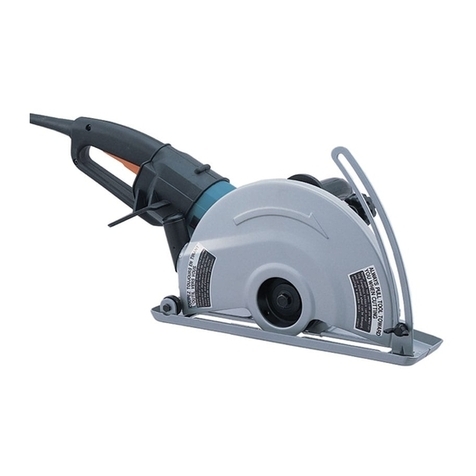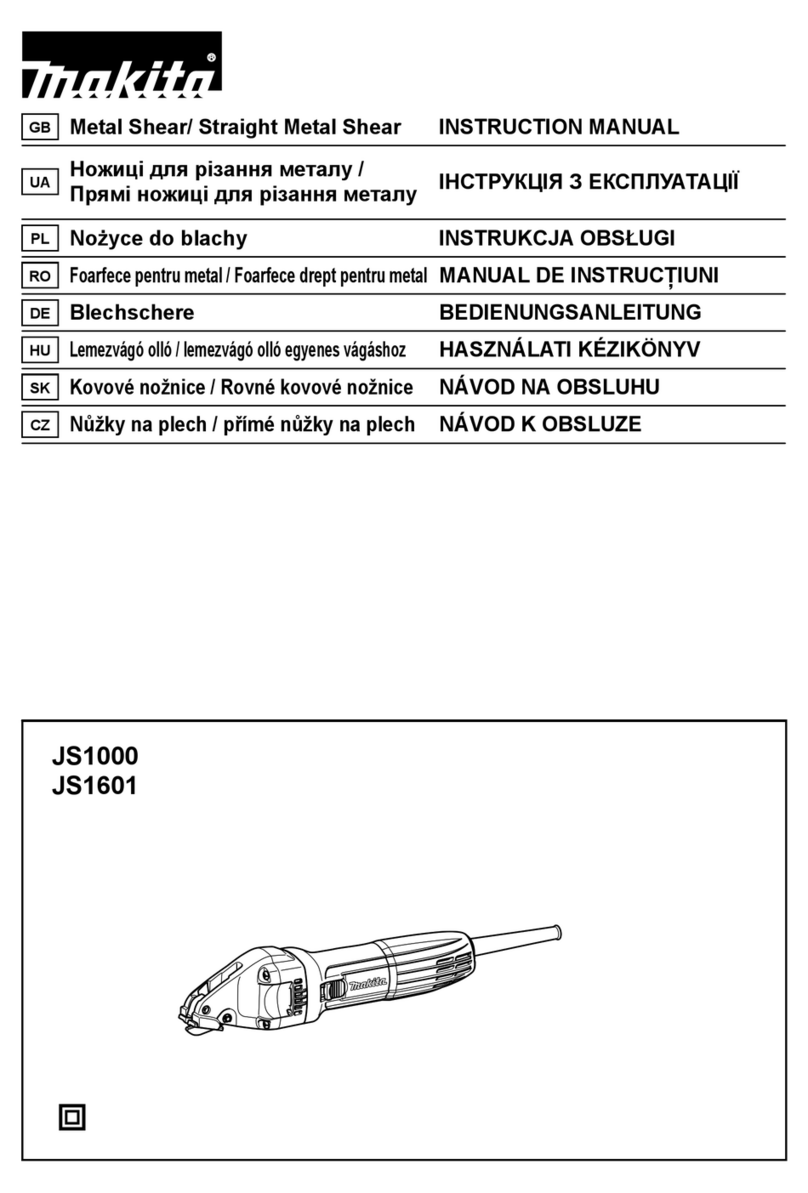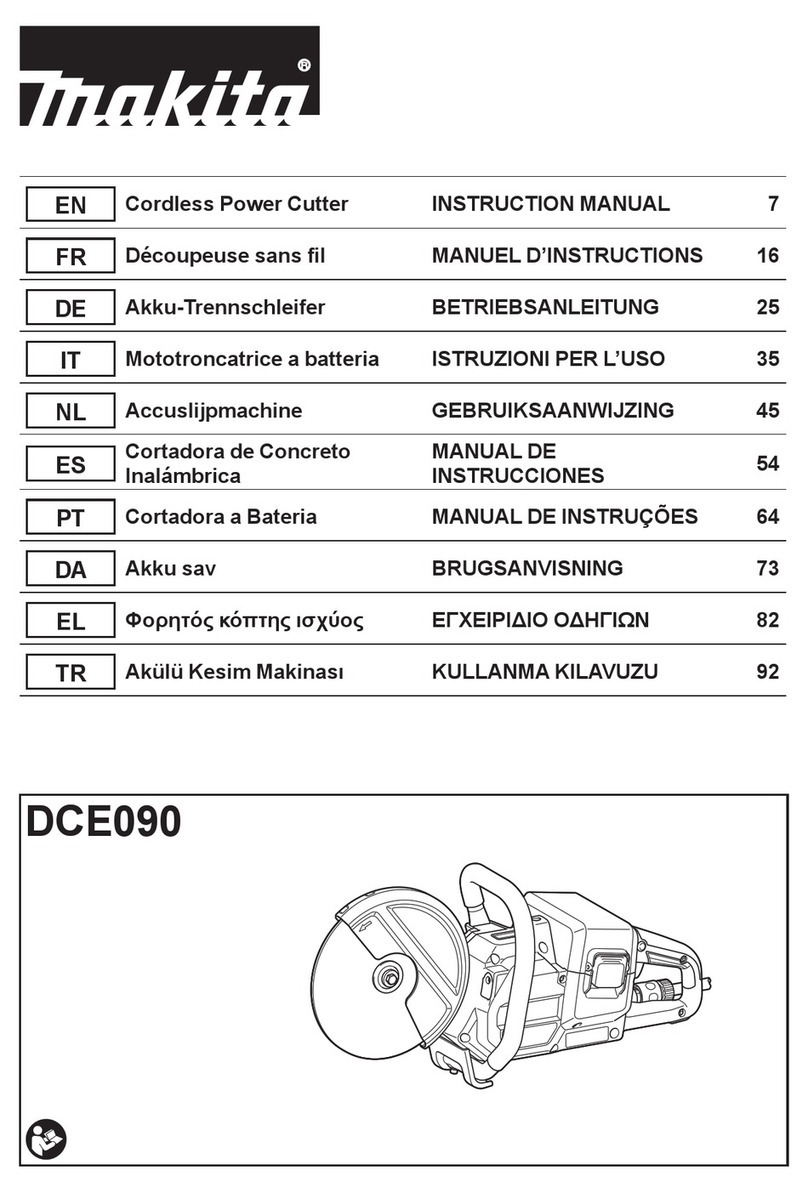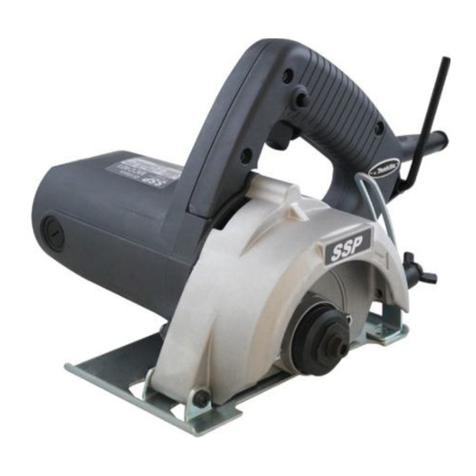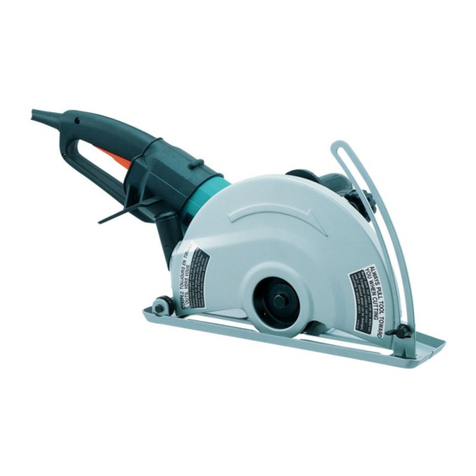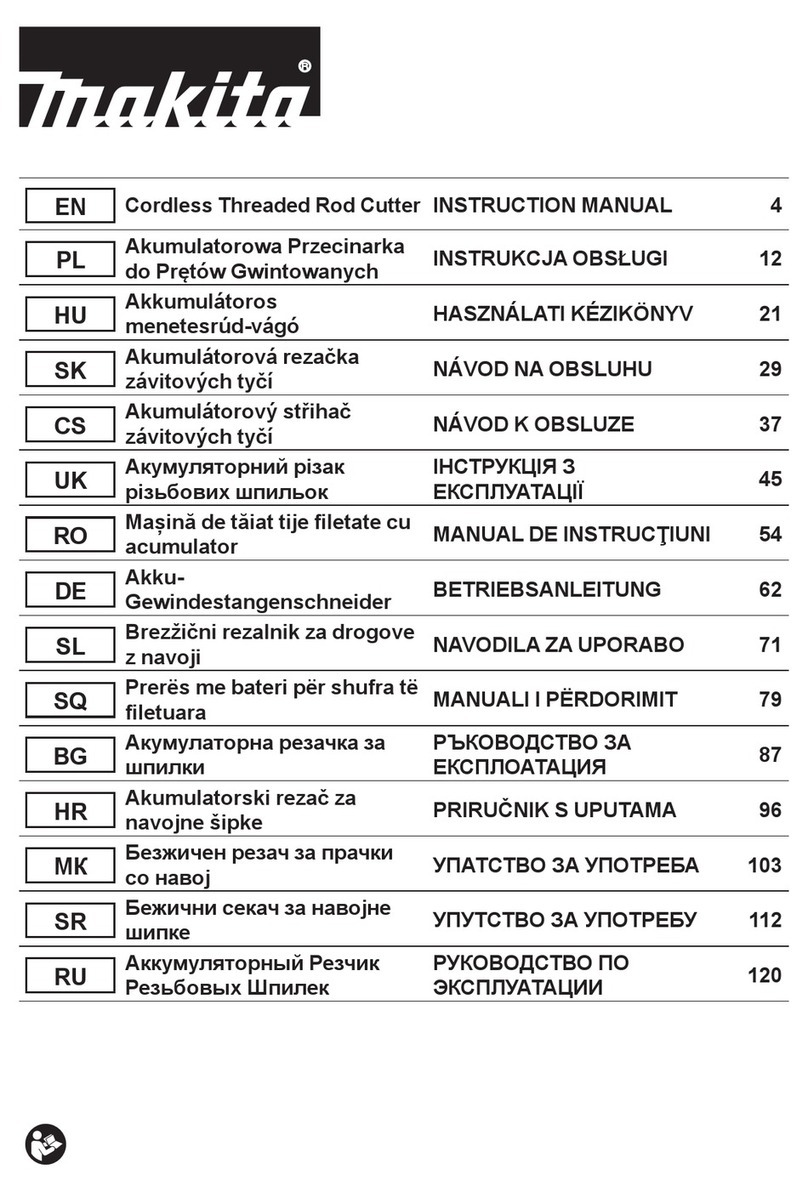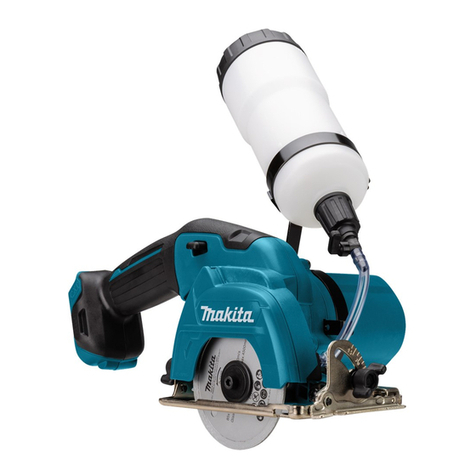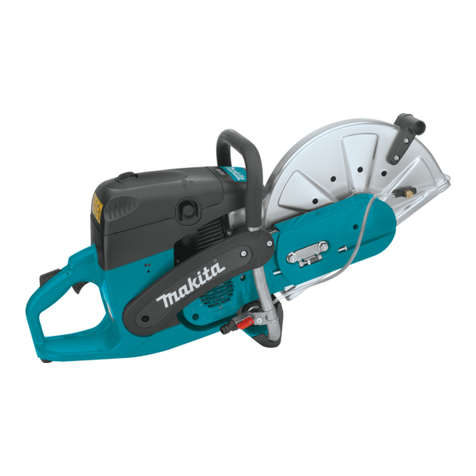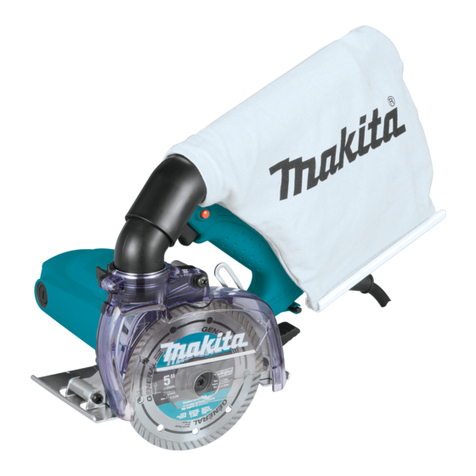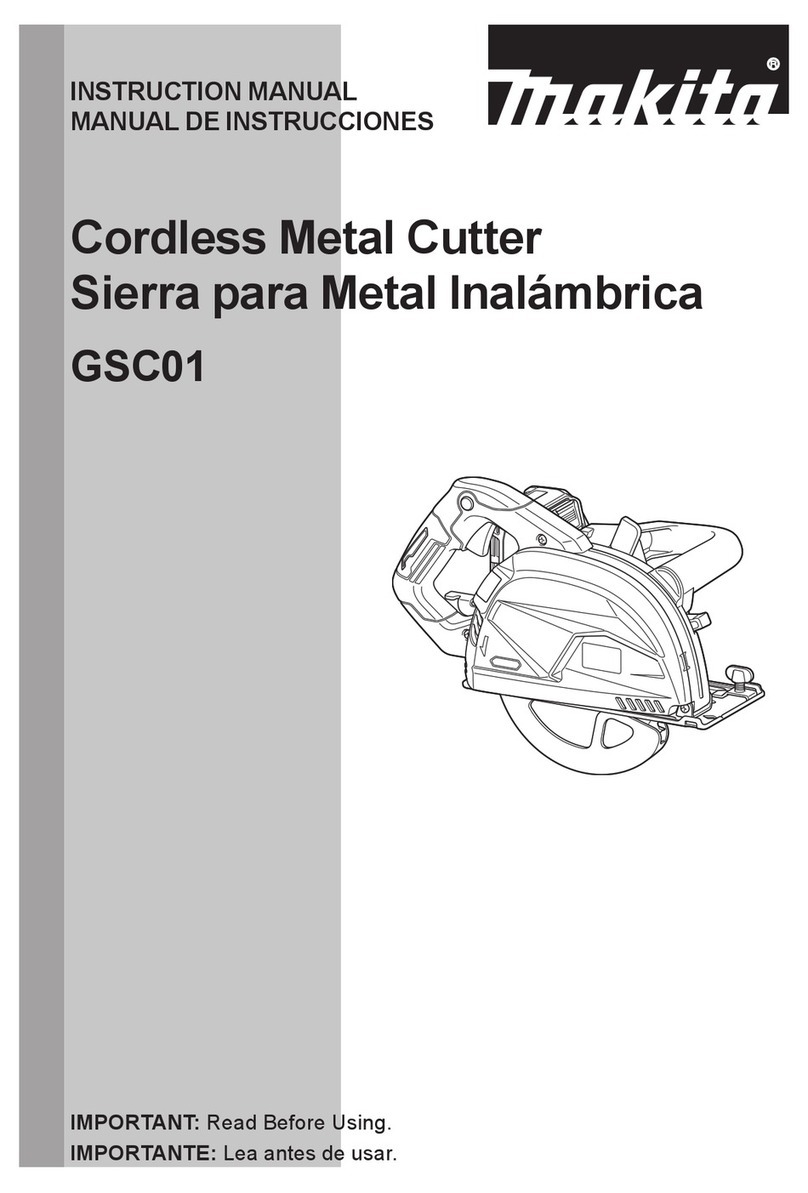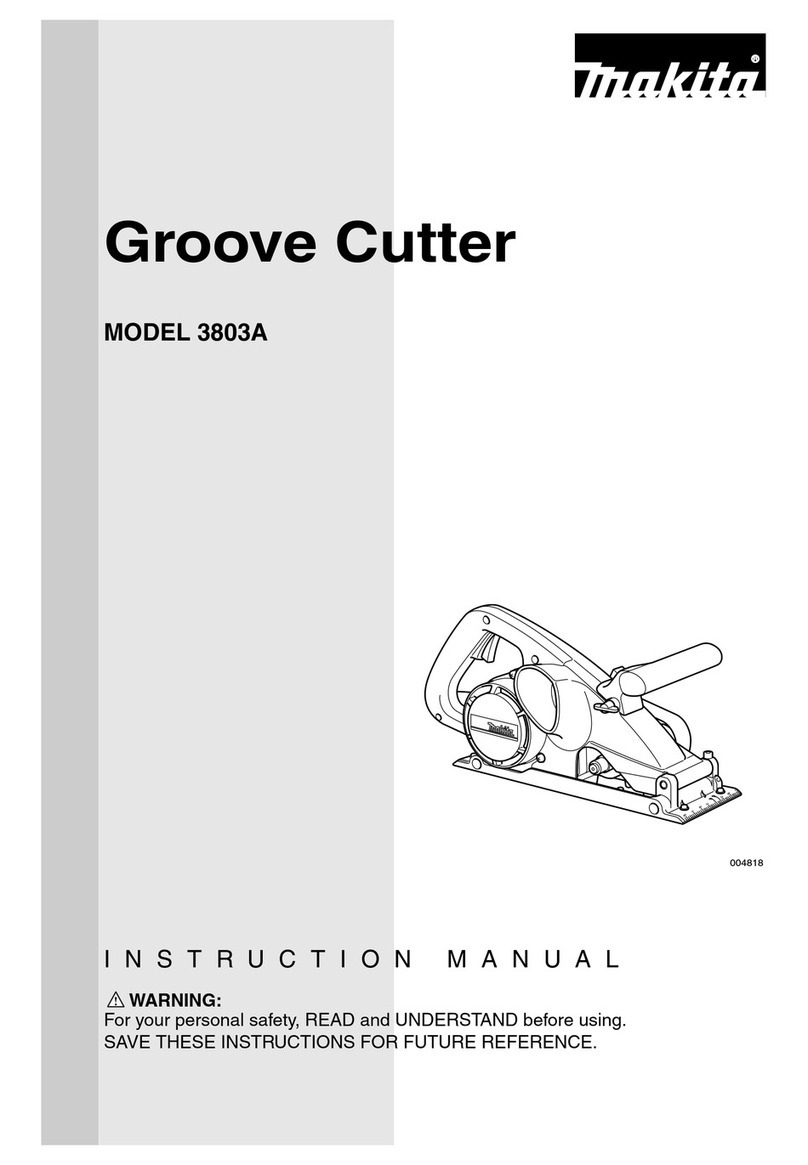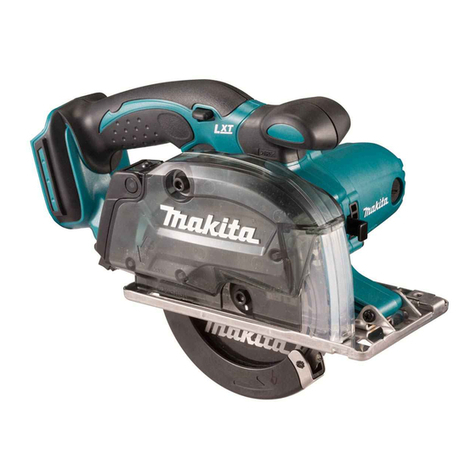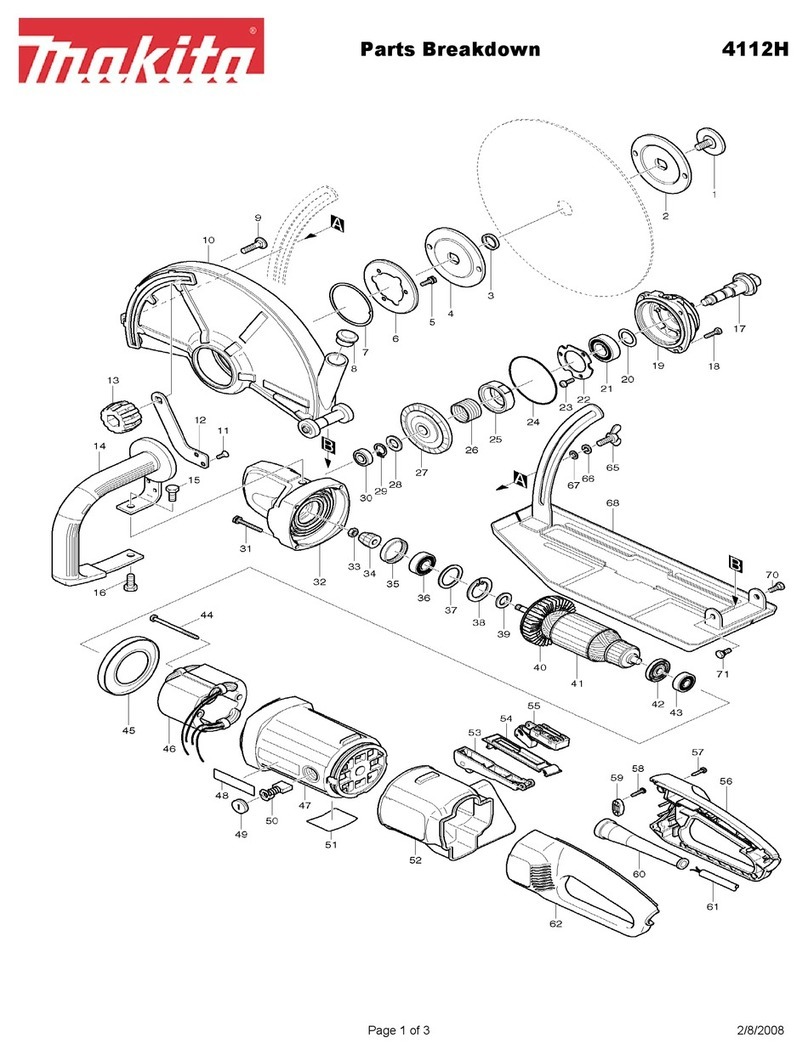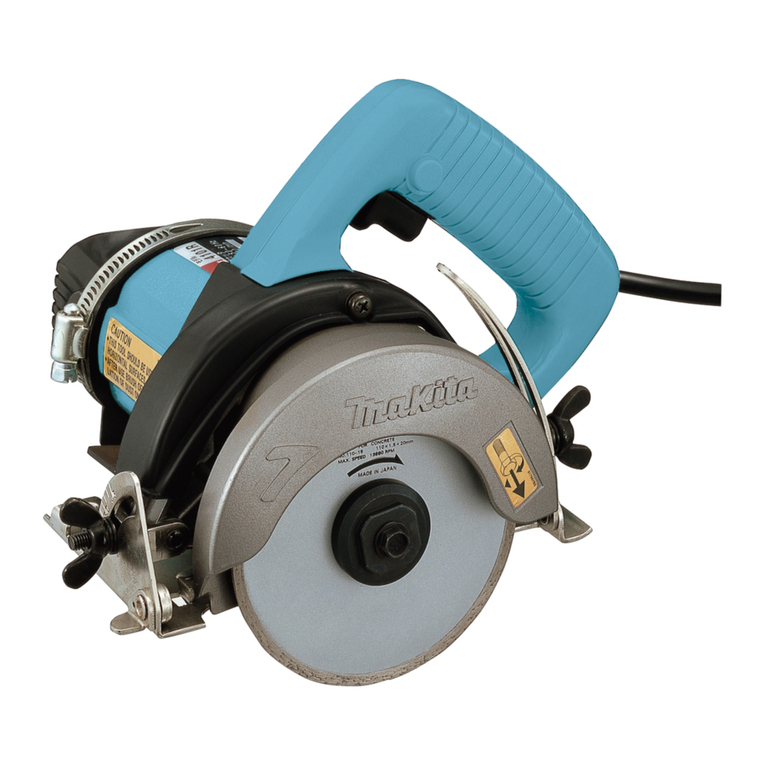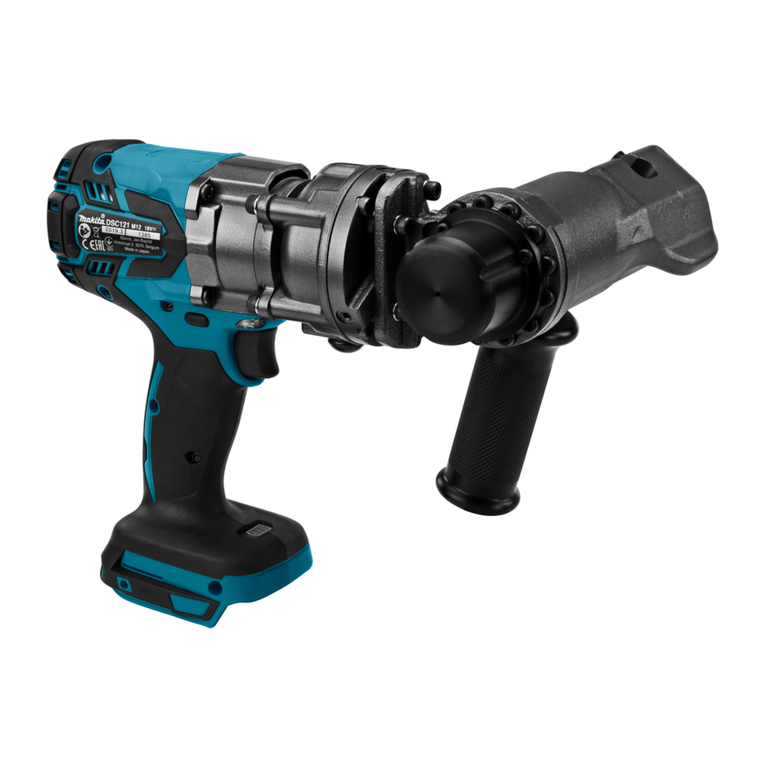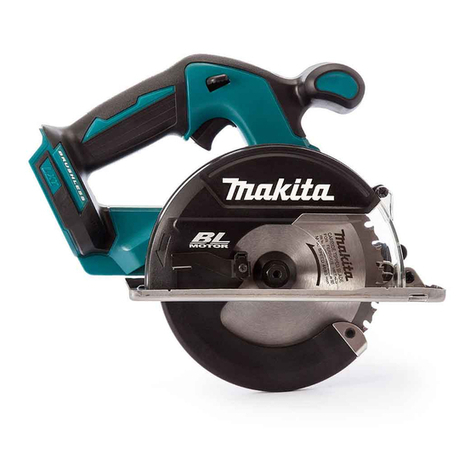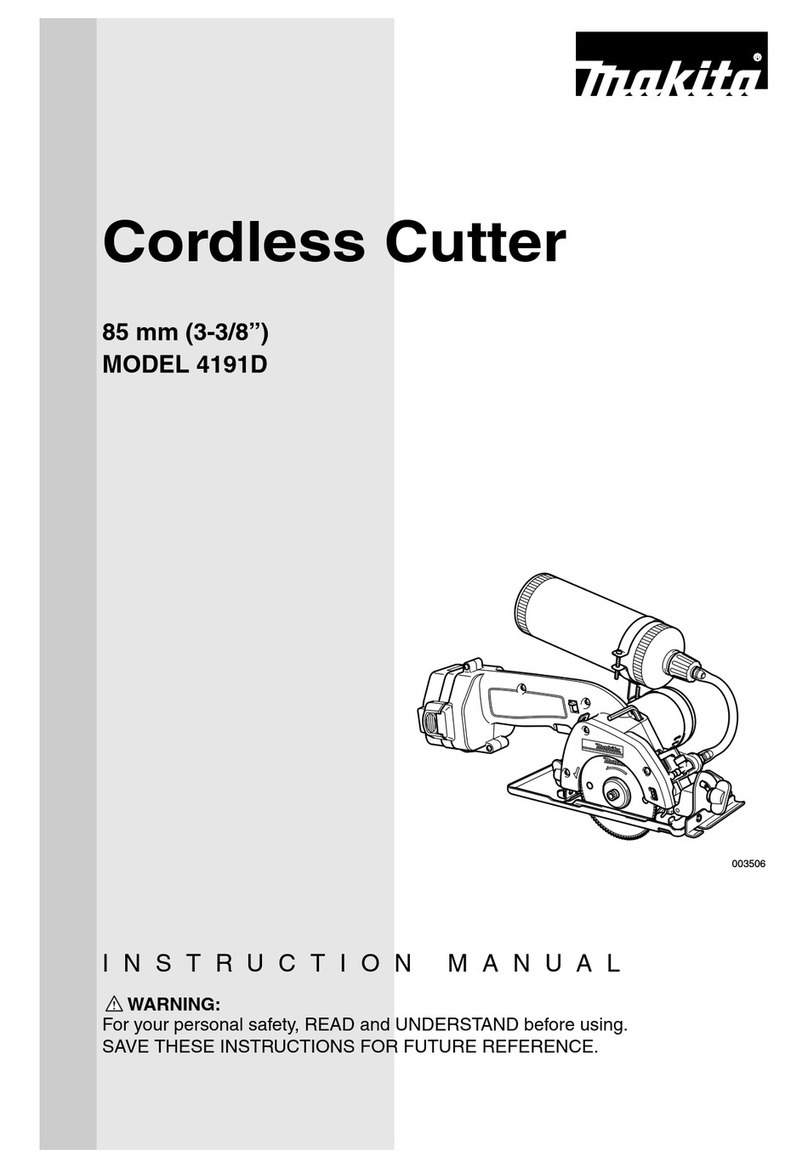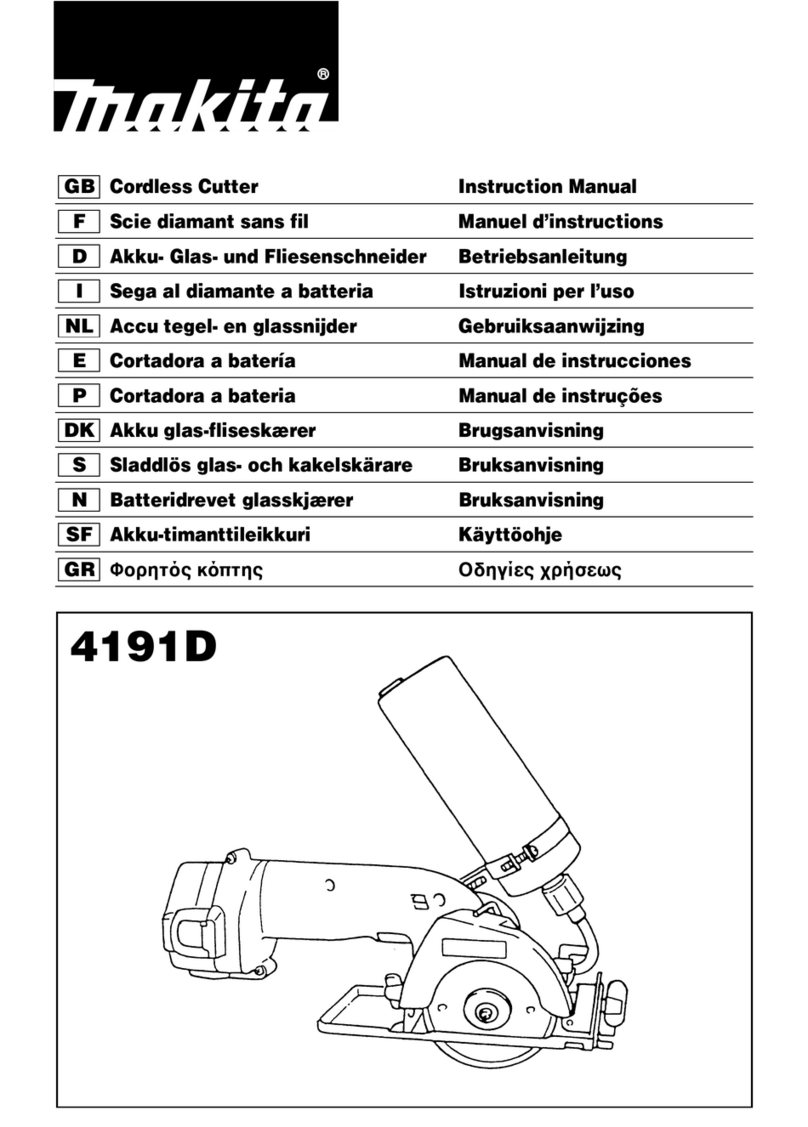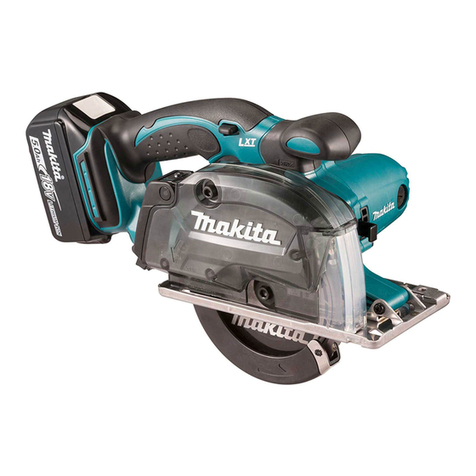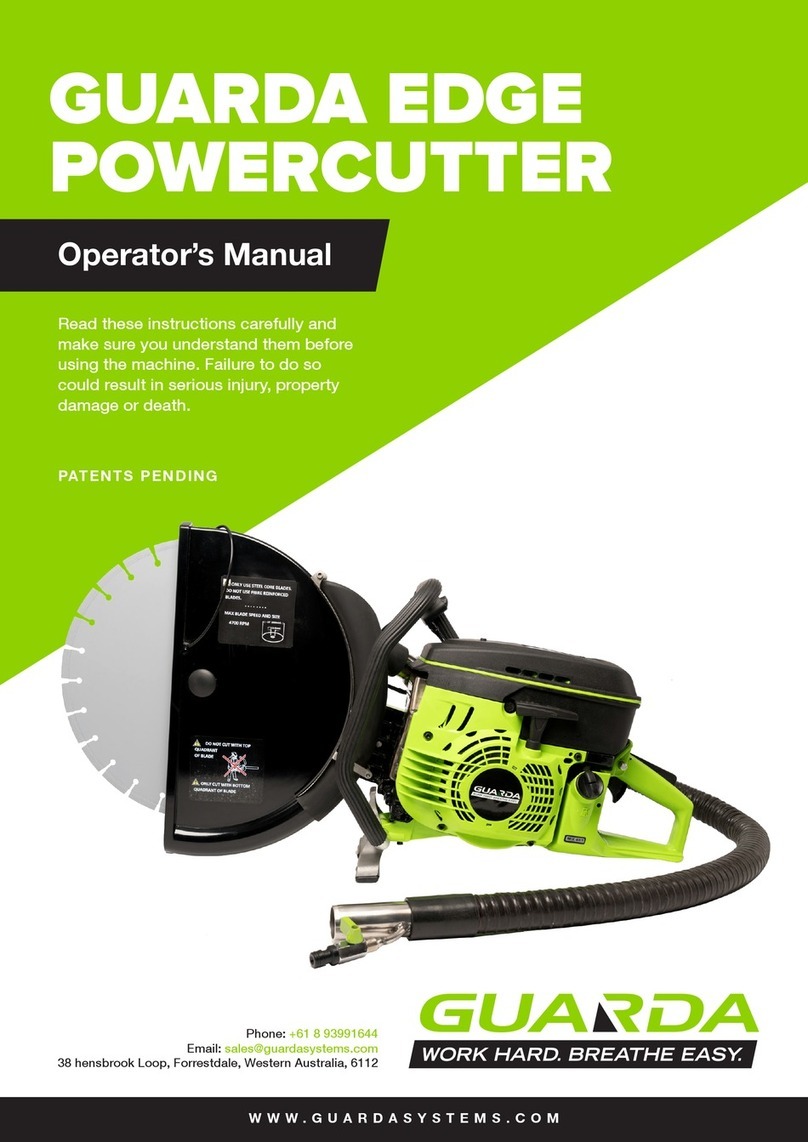8ENGLISH
8. ALWAYS hold the tool rmly with both hands.
NEVER place your hand, leg or any part of your
body under the tool base or behind the saw,
especially when making cross-cuts. If kickback
occurs,thesawcouldeasilyjumpbackwardsover
yourhand,leadingtoseriouspersonalinjury.
►Fig.4
9. Never force the saw. Push the saw forward at a
speed so that the blade cuts without slowing.
Forcing the saw can cause uneven cuts, loss of
accuracy, and possible kickback.
Guard function
1. Check guard for proper closing before each
use. Do not operate the saw if guard does not
move freely and enclose the blade instantly.
Never clamp or tie the guard so that the blade
is exposed. If saw is accidentally dropped, guard
may be bent. Check to make sure that guard
moves freely and does not touch the blade or any
other part, in all angles and depths of cut.
2. Check the operation and condition of the
guard return spring. If the guard and the spring
are not operating properly, they must be ser-
viced before use. Guard may operate sluggishly
due to damaged parts, gummy deposits, or a
build-up of debris.
3.
Assure that the base plate of the saw will not
shift while performing the “plunge cut” when the
blade bevel setting is not at 90 °. Blade shifting
sideways will cause binding and likely kick back.
4. Always observe that the guard is covering the
blade before placing saw down on bench or
oor.Anunprotected,coastingbladewillcause
the saw to walk backwards, cutting whatever is in
its path. Be aware of the time it takes for the blade
to stop after switch is released.
Additional safety warnings
1.
Use extra caution when cutting damp wood, pres-
sure treated lumber, or wood containing knots.
Maintain smooth advancement of tool without decrease
in blade speed to avoid overheating the blade tips.
2. Do not attempt to remove cut material when
blade is moving. Wait until blade stops before
grasping cut material. Blades coast after turn off.
3. Avoid cutting nails. Inspect for and remove all
nails from lumber before cutting.
4. Place the wider portion of the saw base on
that part of the workpiece which is solidly
supported, not on the section that will fall off
when the cut is made. If the workpiece is short
or small, clamp it down. DO NOT TRY TO HOLD
SHORT PIECES BY HAND!
►Fig.5
5. Before setting the tool down after completing a
cut, be sure that the guard has closed and the
blade has come to a complete stop.
6. Never attempt to saw with the circular saw
held upside down in a vise. This is extremely
dangerous and can lead to serious accidents.
►Fig.6
7.
Some material contains chemicals which may be
toxic. Take caution to prevent dust inhalation and
skin contact. Follow material supplier safety data.
8. Do not stop the blades by lateral pressure on
the saw blade.
9. Do not use any abrasive wheels.
10. Only use the saw blade with the diameter that
is marked on the tool or specied in the man-
ual.Useofanincorrectlysizedblademayaffect
the proper guarding of the blade or guard opera-
tionwhichcouldresultinseriouspersonalinjury.
11.
Keep blade sharp and clean. Gum and wood pitch
hardened on blades slows saw and increases poten-
tialforkickback.Keepbladecleanbyrstremoving
it from tool, then cleaning it with gum and pitch
remover, hot water or kerosene. Never use gasoline.
12. Wear a dust mask and hearing protection when
use the tool.
SAVE THESE INSTRUCTIONS.
WARNING: DO NOT let comfort or familiarity
with product (gained from repeated use) replace
strict adherence to safety rules for the subject
product. MISUSE or failure to follow the safety
rules stated in this instruction manual may cause
serious personal injury.
FUNCTIONAL
DESCRIPTION
CAUTION: Always be sure that the tool is
switched off and unplugged before adjusting or
checking function on the tool.
Quick stop for 3, 4, or 6 mm board
thickness groove cutting
Byturningthequickstop,youcanchoosetheappro-
priate depth of groove cutting for 3, 4, or 6 mm board
thickness swiftly.
Thenumber,seenfromthehandleside,indicatesthe
workpiece board thickness.
Forneadjustmentofdepthofgroove,usethedepth
adjustingknob.
►Fig.7: 1. Quick stop 2.Depthadjustingknob
0 mm depth is set properly when the tool is shipped
from the factory, but if you changed the depth of groove
bytheadjustingknob,renethe0mmdepthasfollows:
1. Turnthequickstopto0mm.
2. Turnthedepthadjustingknobtoadjustthedepth.
3. Make sure that the blade does not make any
contact with work piece.
4. Holdthetoolrmlywithonehandonthefrontgrip
andtheotheronthetoolhandle.Pushinthelock-off
button, and turn the tool on.
5. Slowly press down the saw head fully, and check
whether the groove cutter blade does not contacts but
almost touches the workpiece. If not, stop the tool and
wait until the groove cutter blade stops completely, and
adjustthedepthbyturningthedepthadjustingknob
again.

